BY TEQUILA MINSKY | About a month ago, a clammy chill announced that the warm weather was finally gone as brittle brown oak and bright yellow honey locust leaves clung to the rain-slicked sidewalks.
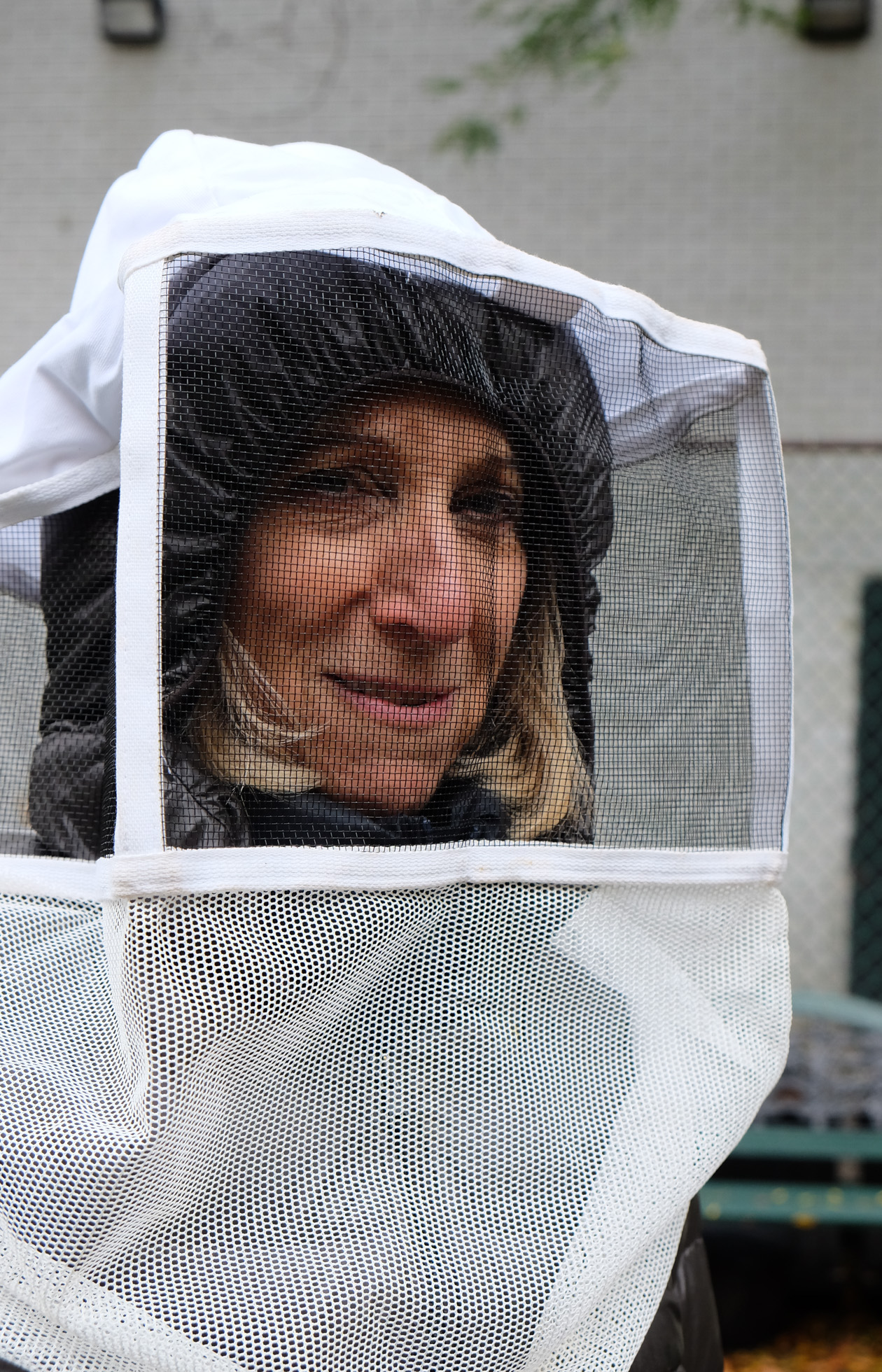
The LaGuardia Community Garden — that swath of bushes, flowers and trees near the Morton Williams supermarket — was still lush with the fall blooms of asters, Japanese anemones, lavender, sage and nasturtiums —while the garden’s seasonal transition continued. Part of this transition was the rewarding honey harvest from the garden’s own beehive.
Sara Jones is not only a talented gardener but an expert beekeeper, as well. She earned a beekeeping certificate from Cornell Cooperative Extension more than two decades ago. Along with garden members Barbara Cahn and Ellen Resnick, Jones donned protective headgear to begin the multistep process of honey harvesting.
Puffs of smoke from the smudge pot kept the bees “nonvolatile” as the harvest crew opened the top box of the four-level hive and brushed the working bees off frames holding the honey-filled combs. Only the top two levels of the hive boxes (called “stupors”) — 17 frames in all — were harvested.
In this four-box hive, the bottom brood box is where the queen bee reigns, and the box directly above is left alone since it holds honey to sustain the bees through the winter.
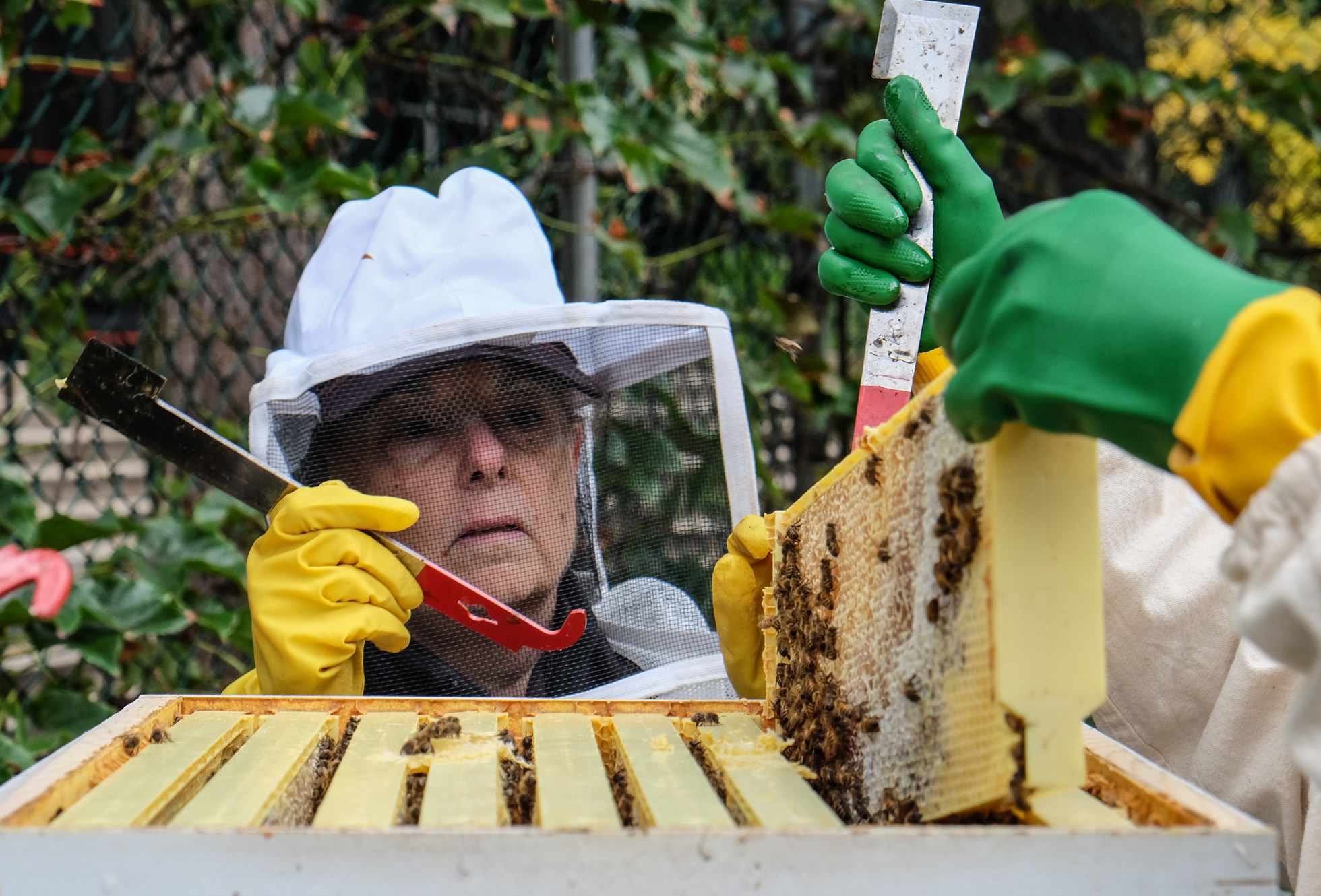
This hive started with squatters — a swarm that settled into a small cabinet in the garden. The queen survived the winter of 2013-14, following the hive’s discovery. That spring, with the help of the New York City Beekeepers Association, bees and honeycombs were moved into purchased hive boxes with frames. The garden’s hive of white boxes sits discreetly at its southeastern corner.
A year later, fall 2015 saw the first honey harvest.
“When I opened the hive in spring of 2016, I found the winter cluster didn’t survive,” Jones said of that first lost colony.
“The hive is reduced drastically in number during the cold winter months,” she explained. “The only job of these ladies is to keep the queen warm and fed during the cold winter.
“When the spring arrives and the light returns, if the queen had survived she would start laying again,” Jones continued. “She needs to build up her army of workers to be ready for the spring blossoms.”
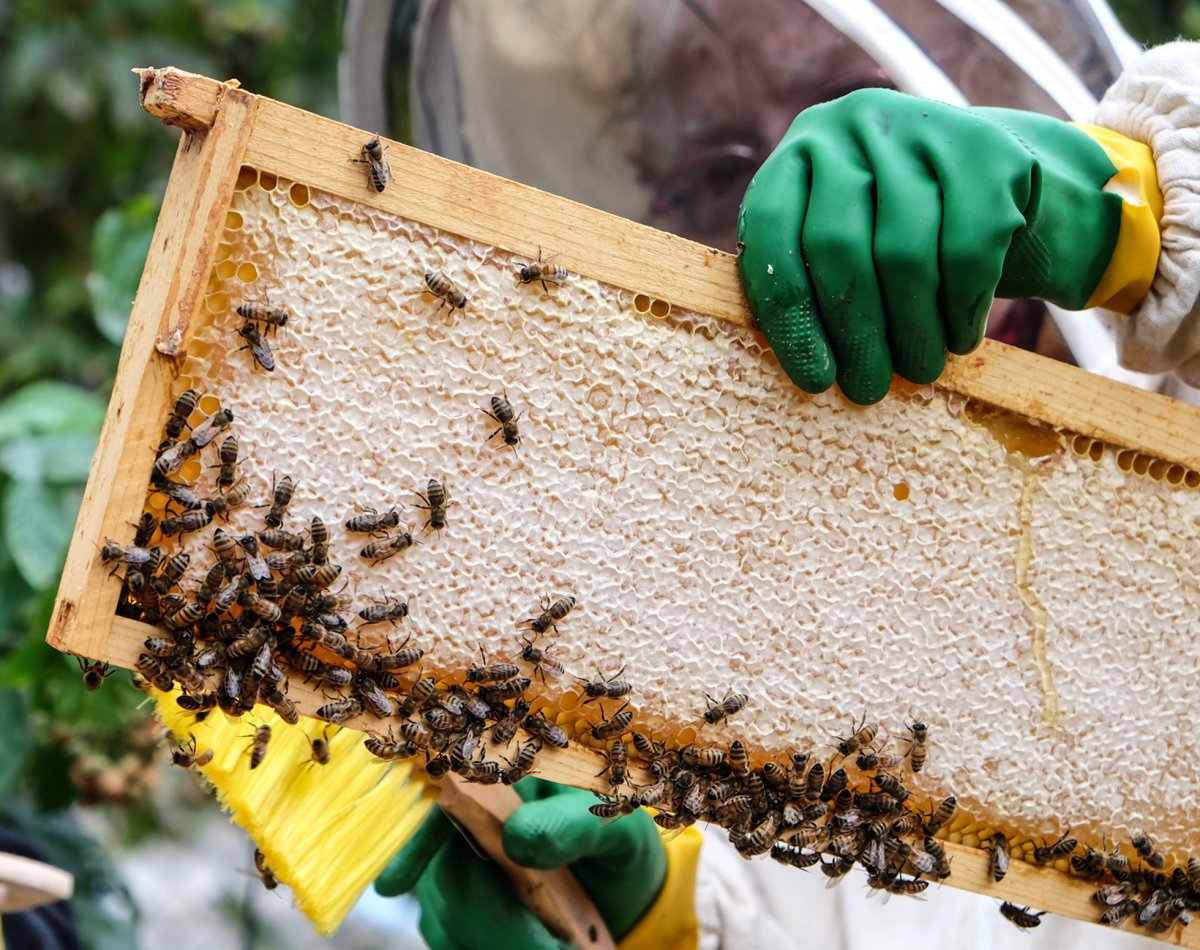
When the queen didn’t survive the winter of 2015-16, like many other urban beekeepers, Jones mail-ordered a queen and workers from Mann Lake Bee Supply in Pennsylvania.
“A local community beekeeper volunteered to drive to Pennsylvania to pick up bees for community gardeners,” she recounted.
Instead, the LaGuardia bee-meister and sidekick Barbara Cahn picked up their order of Carniolan bees — told that this type winters better — at a community garden in Fort Greene, Brooklyn.
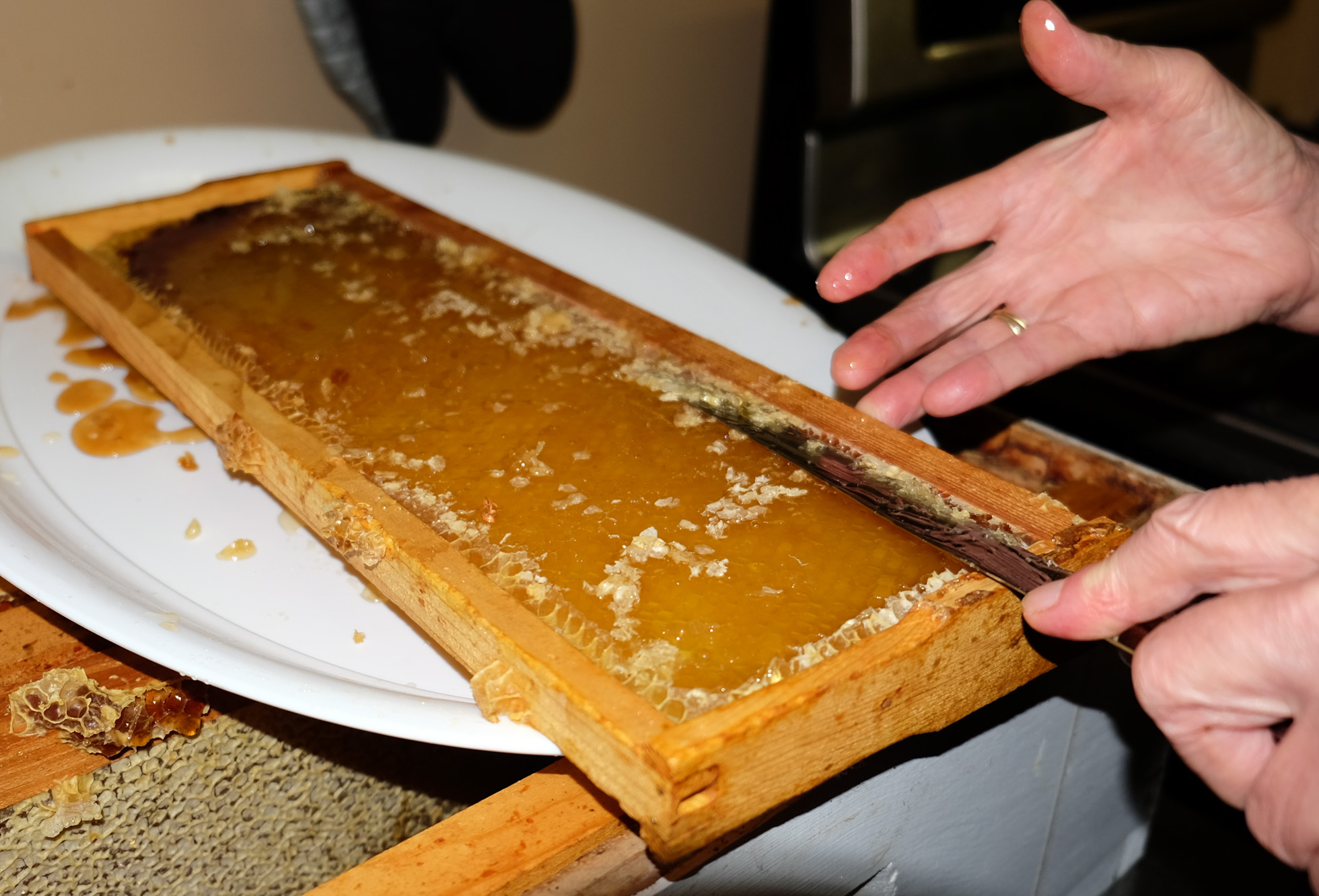
“Imagine, we brought back two 3-pound packages of bees — each with 10,000 bees, in a shopping bag in the subway, while thinking, ‘If people only knew what was in our bag!’” Cahn recalled.
Cahn — with no previous honey harvest experience except for having taken a brief course and reading a book — immersed herself in the process.
“The experience of opening the hive and having all those bees around you is very scary,” she admitted, adding that she learned by doing. “Sara is always calm and assured when working with the bees, so I try to follow her example.”
The afternoon’s one casualty: A bee that navigated into Resnick’s glove stung her wrist twice.
Next the situation started to get sticky. A hand-cranked extractor that could pass as a gargantuan lettuce spinner, loaned from Jones, waited in the middle of the parish hall kitchen of Church of the Ascension on W. 11th St. Additional garden members joined the crew for the next step.
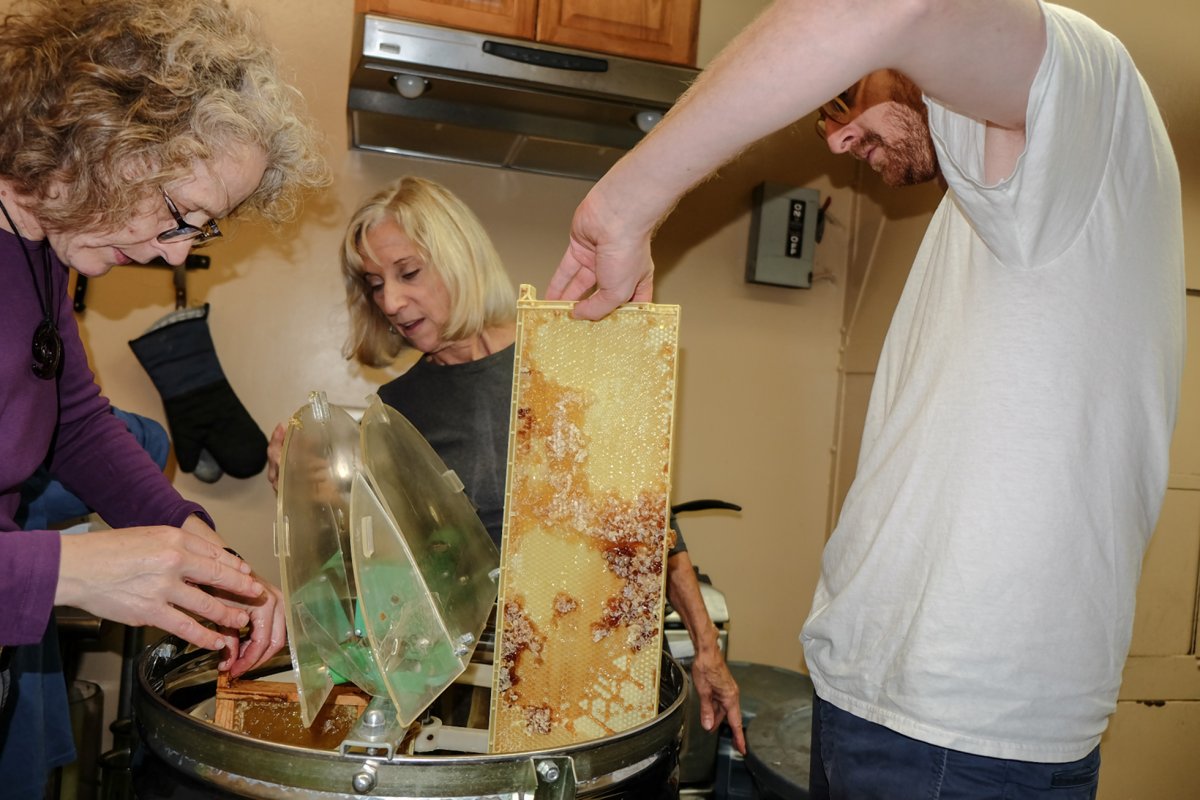
Starting by uncapping the honeycombs — gently removing the top layer of wax that seals honey in its cell — the frames were then set into the extractor.
The well-worn crank’s handle kept falling off. But once the crew MacGyvered it, cranking action built the centrifugal speed needed and the honey flowed, passing through a sieve that filtered out the loose wax. Half the 5-gallon bucket filled with the liquid gold.
“We weren’t able to raise bees in the city until very recently,” Jones noted. “And we’re registered with the Department of Health, which issues no-cost licenses.”
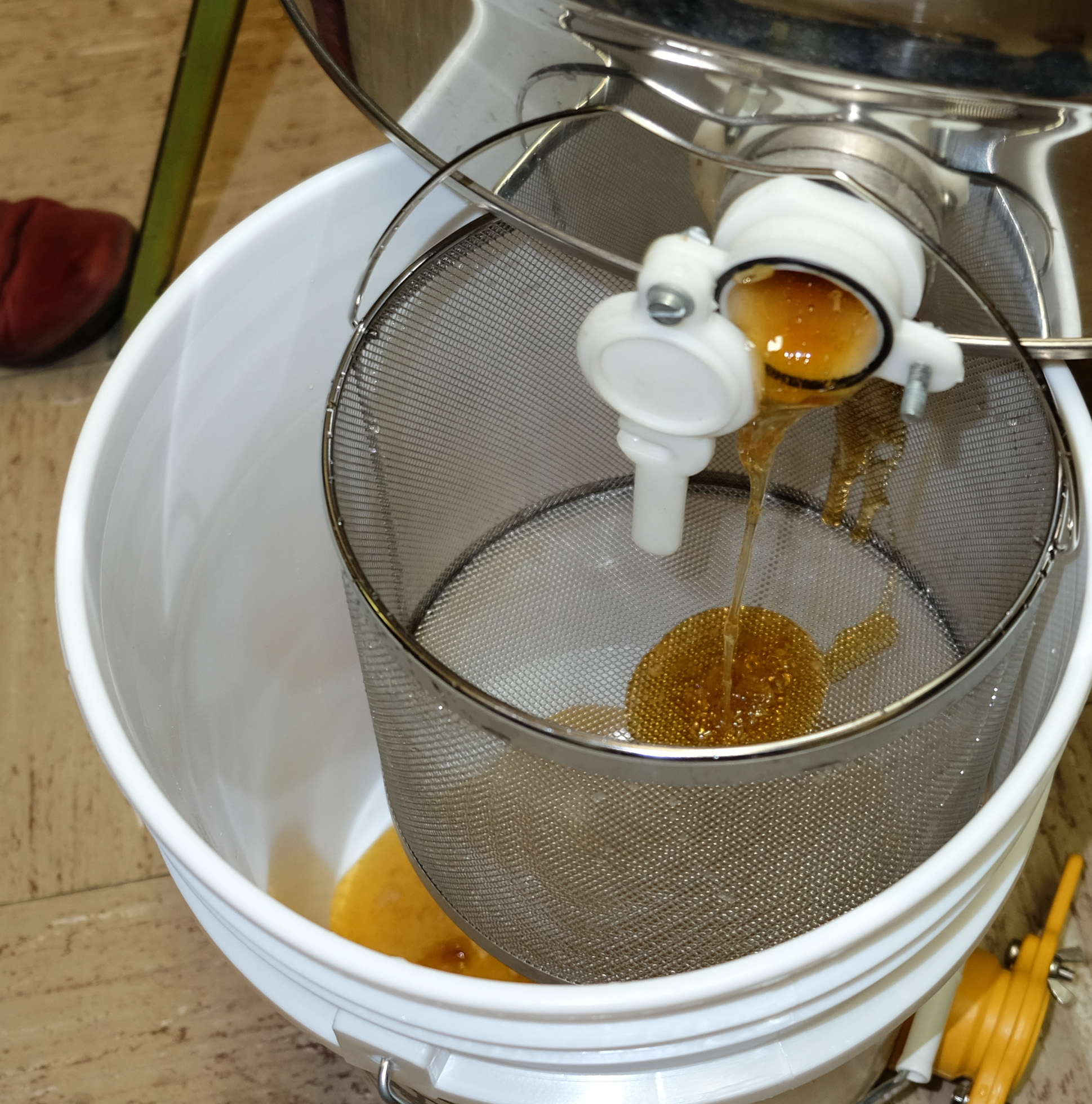
There are about 200 licensed hives in Manhattan.
Two harvests are the usual routine. One in late spring would have yielded a light-flavored rose-and-lavender honey from the garden’s 100 rose bushes and lavender plants. The autumn product yields a darker honey.
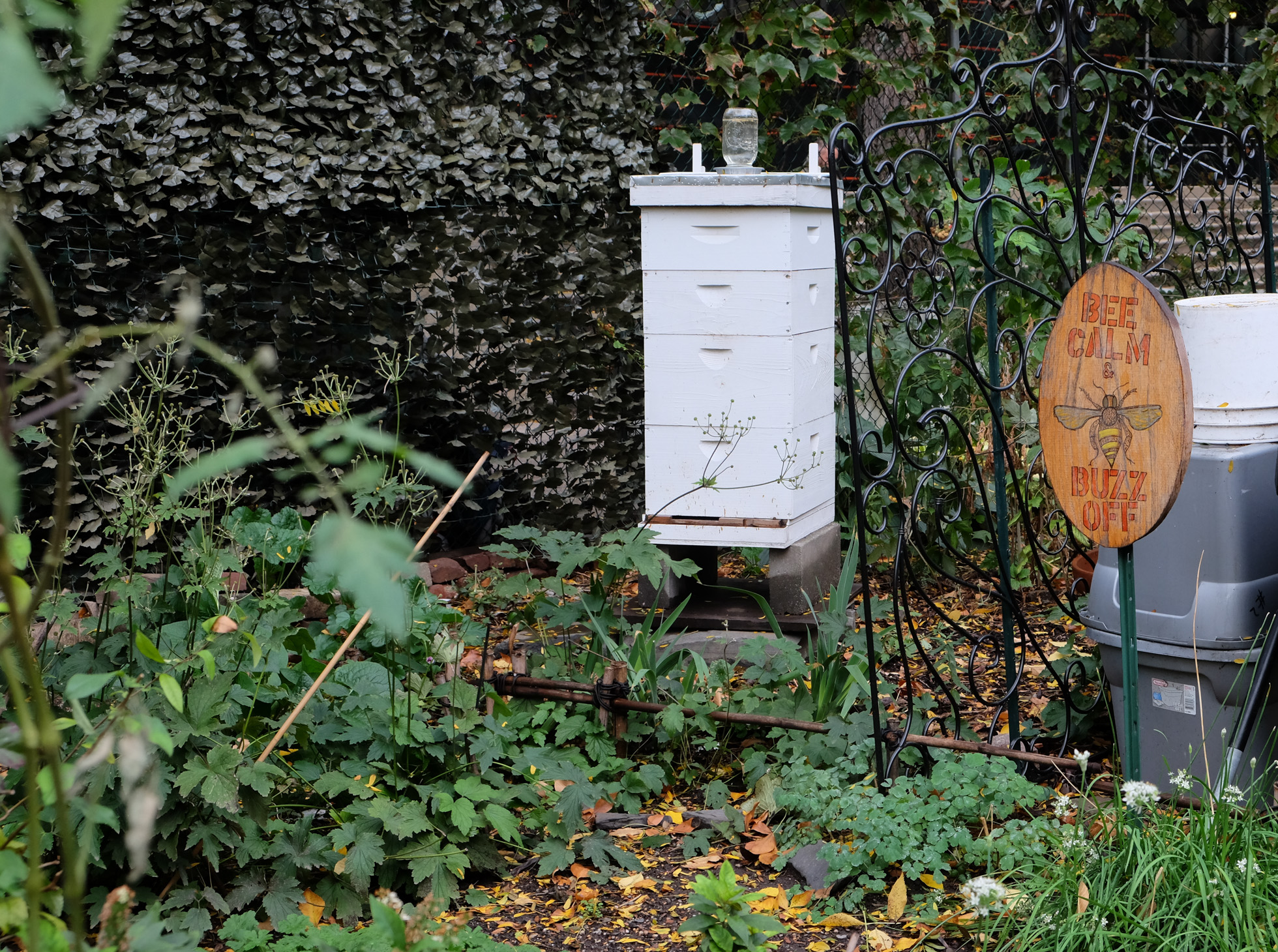
“We only harvested once this year,” Jones said. That’s why both the spring-made lighter honey and autumn darker honey were visible in the honeycombs and mixed together during the harvest process.
Two-dozen 8-ounce and two-dozen 12-ounce honey-filled containers were sold to garden members.
“It’s wonderful to have honey that tastes like the flowers that grow in our garden,” Cahn enthused. “We all noticed the taste of lavender and rose, and some more subtle flavors.
“We are going to try to keep our bees alive this winter by surrounding the hive with hay bales,” she stressed. Using Thanksgiving displays appropriated from nearby Amity Hall and Church of the Ascension, the hives were tucked in for the winter with hay bales.
Jones saved about two cups of the filtered-out beeswax to make candles or cosmetics.
“Urban beekeeping is a lot of work and a labor of love,” she said, adding that, with a small operation, you don’t do it for money. More important, she emphasized, “Bees’ pollination is so important to the environment,” pointing to the flora in the LaGuardia Community Garden, which for neighbors is a little piece of Greenwich Village paradise.
LaGuardia Community Garden is just south of Bleecker St. Its individual plots are allocated to community members, each plot expressing one’s horticultural proclivities. This street-side oasis is open to the public from spring through fall. But like the lives of the magical bees, the garden’s existence is tenuous.
As Joni Mitchell sang, “They paved paradise and put up a parking lot.” In this case, it’s N.Y.U. that is threatening paradise with construction plans for a new building on the supermarket site that could jeopardize the beloved garden.

















